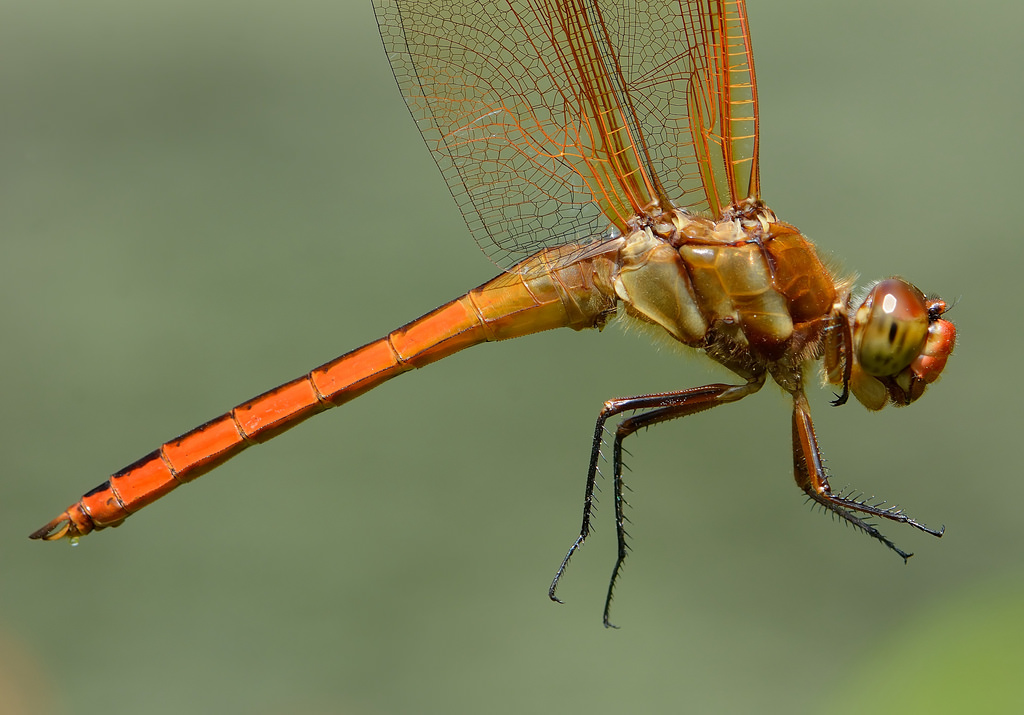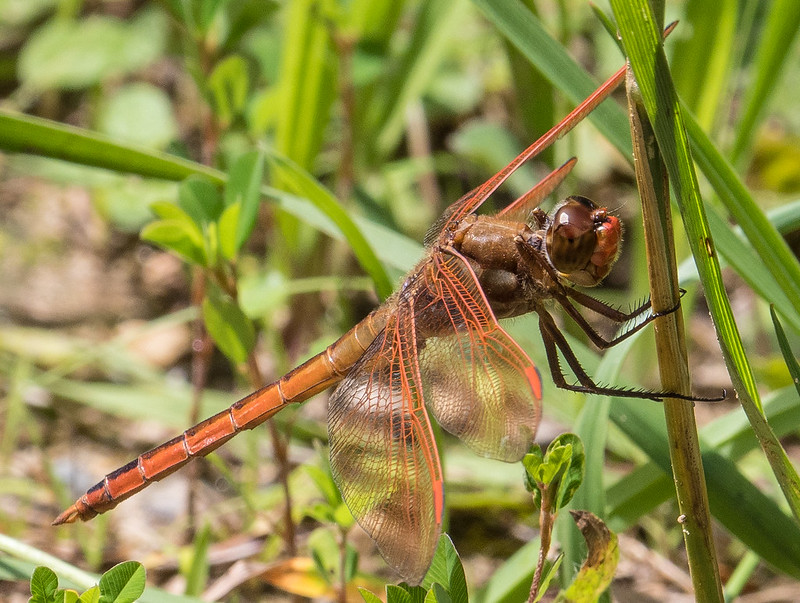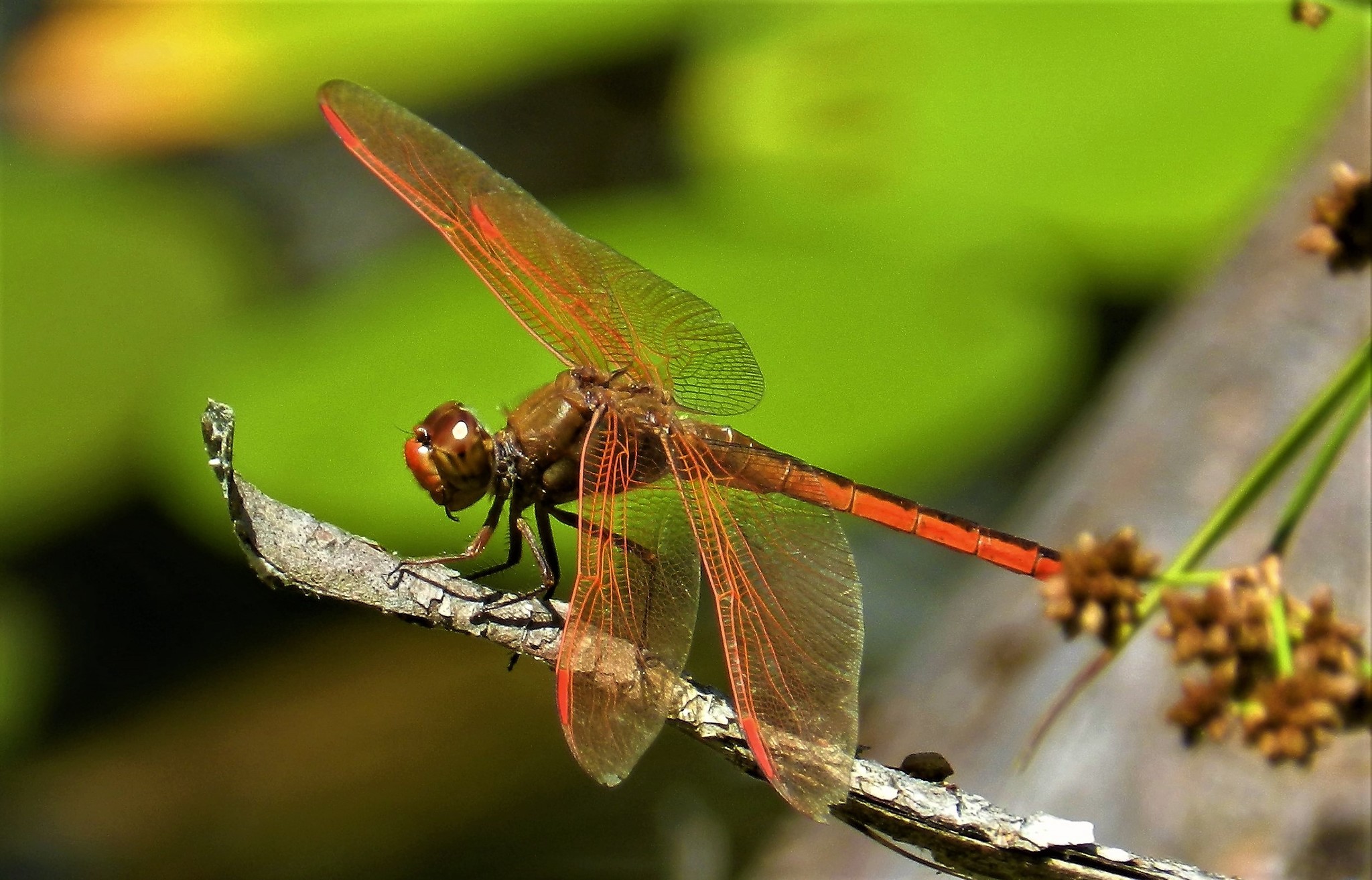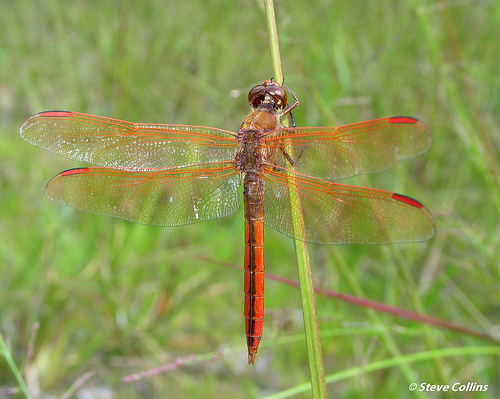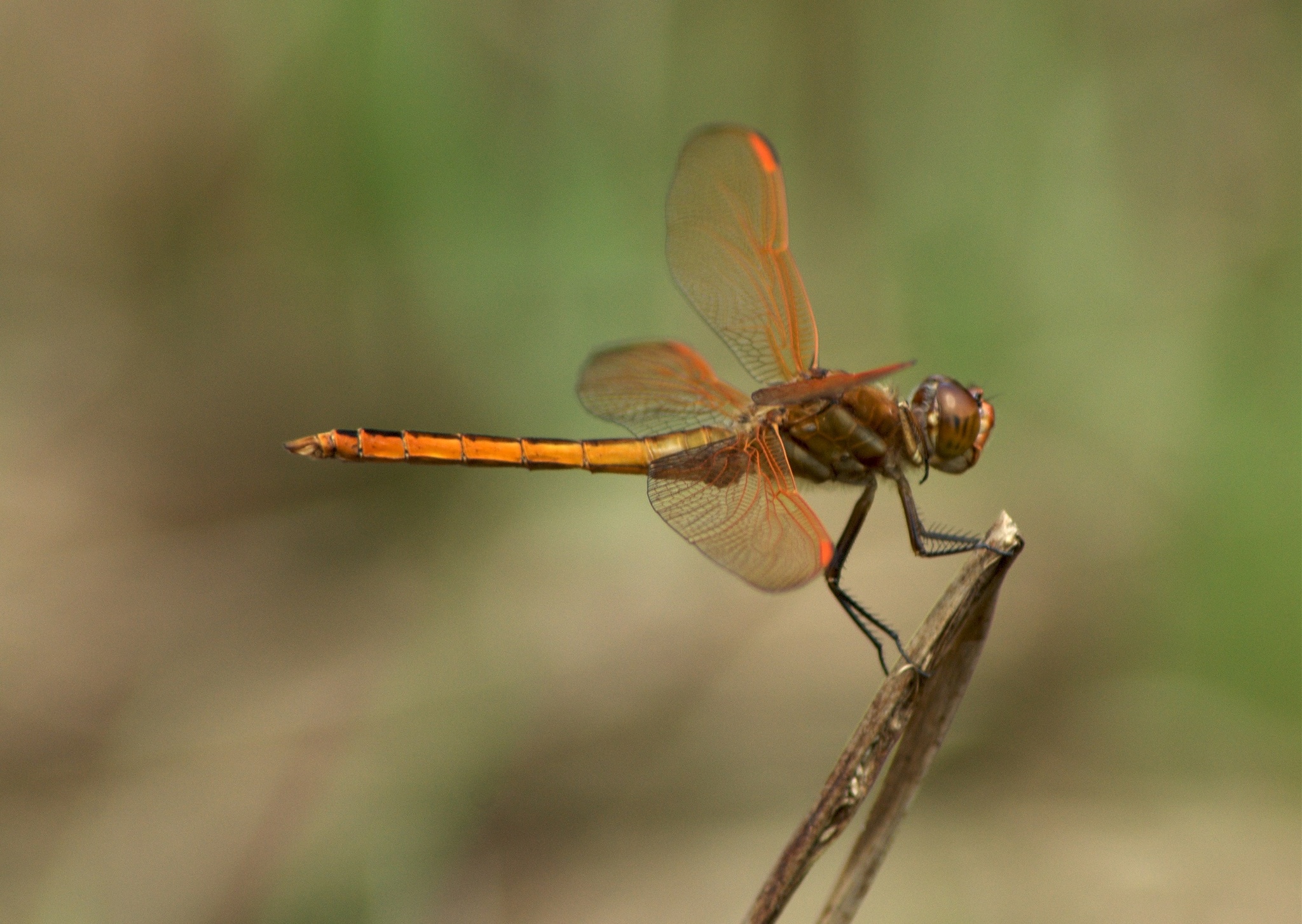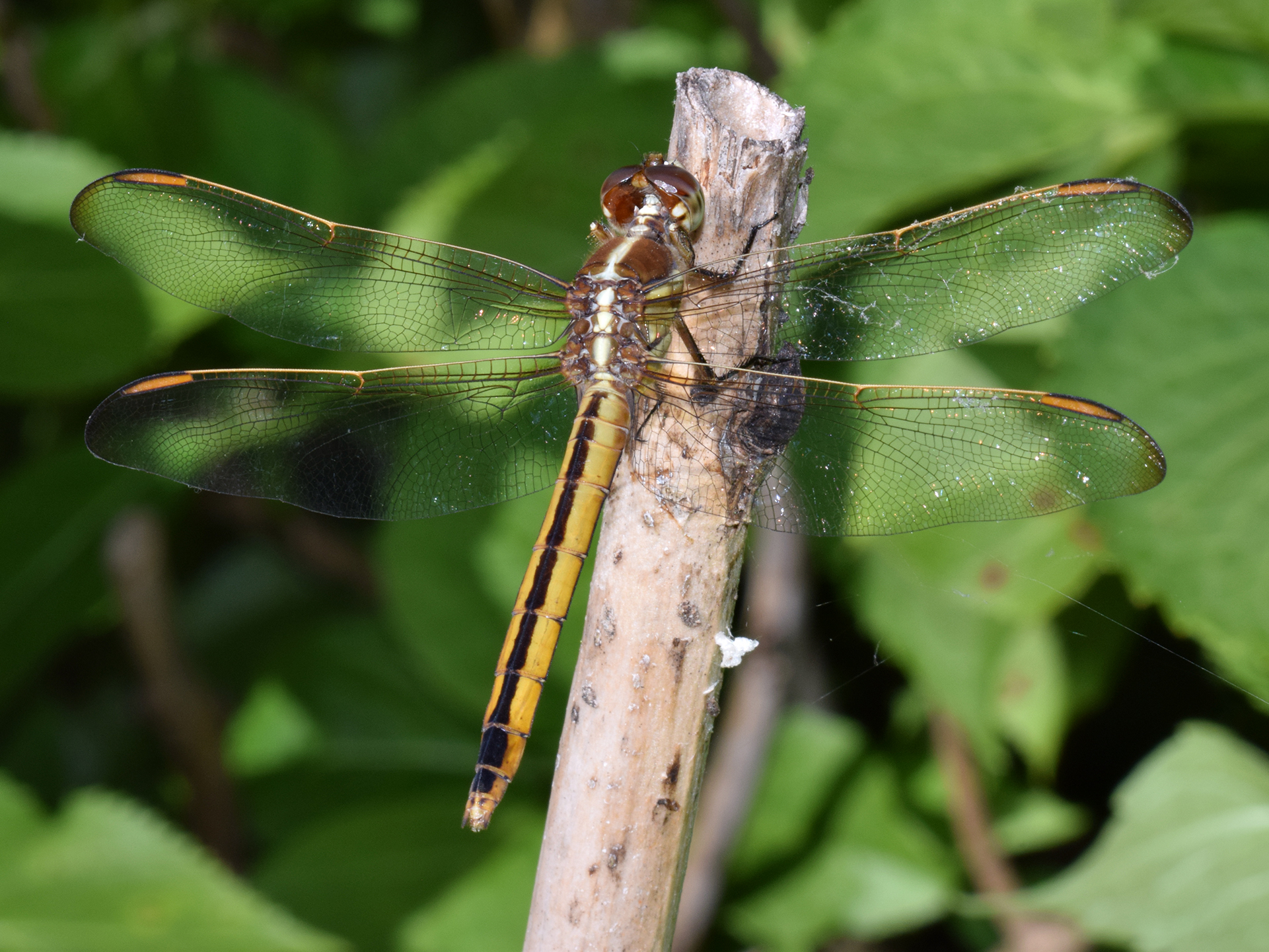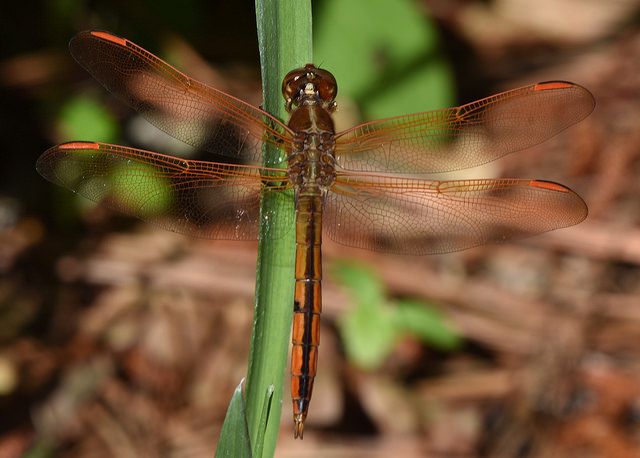Map Snapshot















76 Records
Status
Golden-winged Skimmer (Libellula auripennis) is a brightly-colored, southern species which frequents vegetated ponds, lakes, or marshes, especially shallow, grassy ones (Paulson, 2011). This species is widely distributed in Maryland, though rather sparsely. There are records of this uncommon species from ten counties across the state (Richard Orr's The Dragonflies and Damselflies of Maryland and the District of Columbia). This dragonfly is ranked as S3 (watch list).
Seasonality Snapshot
Source: Wikipedia
| Libellula auripennis | |
|---|---|

| |
| Scientific classification | |
| Domain: | Eukaryota |
| Kingdom: | Animalia |
| Phylum: | Arthropoda |
| Class: | Insecta |
| Order: | Odonata |
| Infraorder: | Anisoptera |
| Family: | Libellulidae |
| Genus: | Libellula |
| Species: | L. auripennis
|
| Binomial name | |
| Libellula auripennis Burmeister, 1839
| |
Libellula auripennis, the golden-winged skimmer, is a species of skimmer in the family Libellulidae.[3][4] It is found in North America.[4]
Conservation
[edit]The IUCN conservation status of Libellula auripennis is "LC", least concern, with no immediate threat to the species' survival. The population is stable.[1][5][6]


References
[edit]- ^ a b Paulson, D.R. (2017). "Libellula auripennis". IUCN Red List of Threatened Species. 2017: e.T51275269A80696408. doi:10.2305/IUCN.UK.2017-3.RLTS.T51275269A80696408.en. Retrieved 16 December 2022.
- ^ "Libellula auripennis. NatureServe Explorer 2.0". explorer.natureserve.org. Retrieved 16 December 2022.
- ^ "Libellula auripennis Species Information". BugGuide.net. Retrieved 2018-02-04.
- ^ a b "Libellula auripennis Report". Integrated Taxonomic Information System. Retrieved 2018-02-04.
- ^ "Odonata Central". Odonata Central, University of Alabama. Retrieved 2018-02-04.
- ^ Ball-Damerow JE, Oboyski PT, Resh VH (2015). "California dragonfly and damselfly (Odonata) database: temporal and spatial distribution of species records collected over the past century". ZooKeys 482: 67-89.
- ^ a b "Images and collection data for Libellula auripennis". Pictures from Earth. Retrieved 2018-02-04.
- Garrison, Rosser W. / Poole, Robert W., and Patricia Gentili, eds. (1997). "Odonata". Nomina Insecta Nearctica: A Check List of the Insects of North America, vol. 4: Non-Holometabolous Orders, 551-580.
- Paulson, Dennis R., and Sidney W. Dunkle (1999). "A Checklist of North American Odonata including English name, etymology, type locality, and distribution". Slater Museum of Natural History, University of Puget Sound, Occasional Paper no. 56, 88.
Further reading
[edit]- Arnett, Ross H. (2000). American Insects: A Handbook of the Insects of America North of Mexico. CRC Press.

